When a Yucca Isn’t a Yucca – by Steve Huddleston
Red yuccas are at least related to yuccas, but they’re in a different genus. That means that they’re cousins. They’re also outstanding landscaping plants for big parts of Texas.
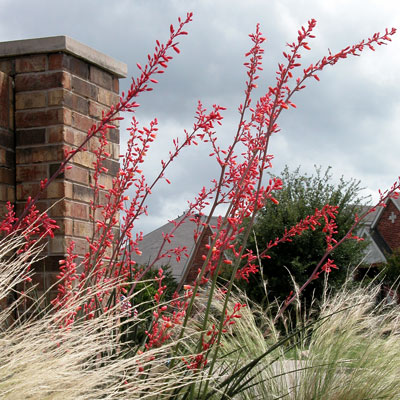
The plants form mounds of fleshy, narrow, evergreen leaves 2 – 4 ft. long that gracefully arch downward and feature white fibrous threads on their margins. The mounds reach heights and spreads of 3 ft. and create sculptural looks in the landscape.
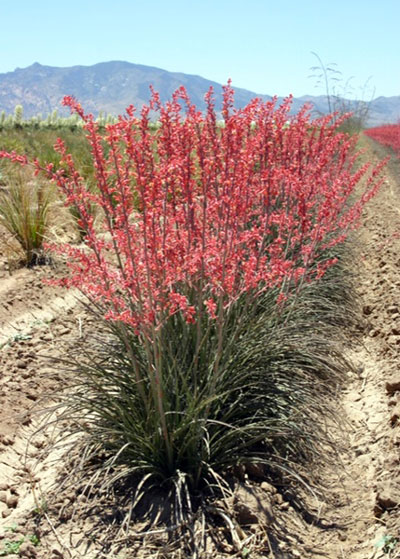
The striking flowering stalks rise 4 to 6 ft. above the foliage from spring through fall and feature 1-in. long, bell-shaped flowers that appear in clusters up and down the stalks. The native species is coral-red in color, with the inside of each flower a pale yellow.
Red yucca flowers are rich in nectar and therefore are attractive to hummingbirds and butterflies. Many of the flowers give way to brown seed pods that contain chambers filled with flat, black seeds.
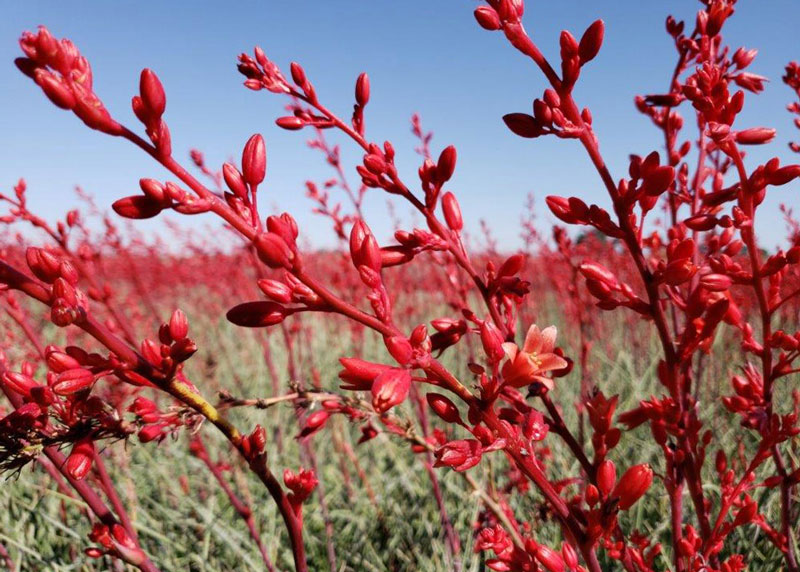
Red yuccas prefer full sun, and the plants tolerate high temperatures and reflected heat, making them outstanding choices along sidewalks, driveways, and in parking lots. They are useful around patios and swimming pools because of their clean, litter-free nature.
Red yuccas tolerate a wide range of soils as long as they are well drained. Once established, red yuccas are extremely tolerant of droughts. Plant them on 3- to 4-ft. centers in staggered rows.
The only maintenance required is the removal of spent blooming stalks at the end of the season and the occasional removal of browned, older foliage close to the ground.
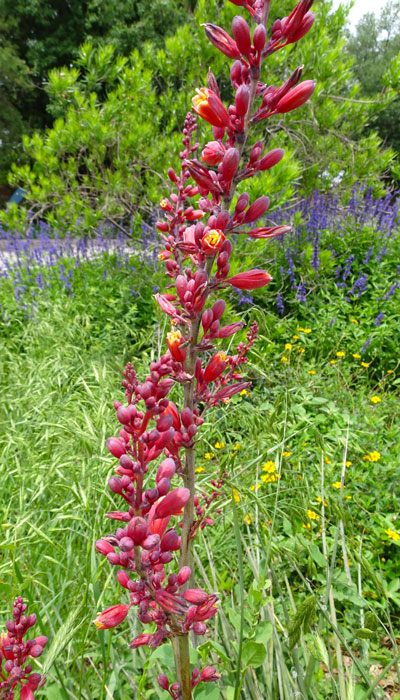
Red yuccas find their callings in xeriscapes, rock gardens, pollinator gardens and in large containers. Plant them in groupings or singly as accent plants.
They suffer from no serious insect or disease problems. Deer, however, like to feed on the unarmed foliage and flower spikes.
Some facts to know…
Botanically: Hesperaloe parviflora. It’s in the Asparagaceae, or asparagus, family, which includes agaves, asparagus, Spanish bluebells (Hyacinthoides), and yuccas.
Native to the Chihuahuan Desert of southwestern Texas and northeastern Mexico.
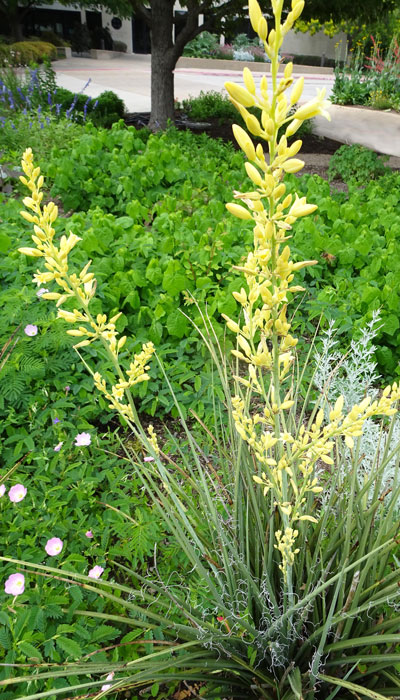
Adapted to USDA Hardiness Zones 5-10.
Thanks to Mountain States Wholesale Nursery in Arizona, several cultivars of red yucca exist. Each has its own special color or growth habit. There is also a naturally occurring, yellow-flowering selection.
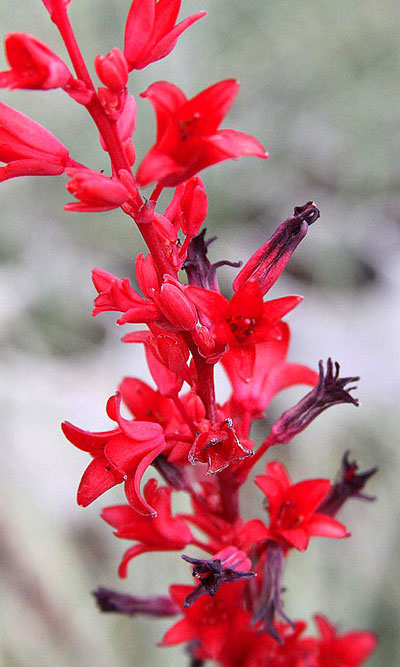
Brakelights red yucca grows to 2 ft. and has cardinal-red flowers on a compact plant.
Desert Flamenco features side branching on the blooming stalks and thus a waterfall of pinkish-orange flowers. This cultivar produces very few seed pods, which allows for an extended blooming period through the fall.
Desert Dusk has maroon flowers on an upright and compact flowering stalk that is also maroon.
Sandia Glow has watermelon-red flowers.
